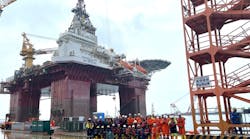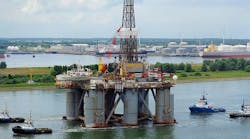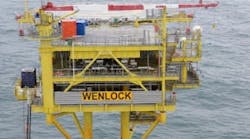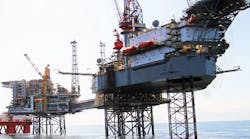We are exiting a year in which the US oil and natural gas industry experienced a mix of unprecedented challenges and renewed hope for a brighter future. As the industry continued to endure sustained low commodity prices in 2017, historic storms pounded the Gulf of Mexico, flooding our nation’s energy corridor and disrupting the lives of millions of Gulf Coast residents. But the industry also saw new and encouraging signals from Washington, D.C. in 2017, as the Trump administration began implementing its America First Offshore Energy Strategy and comprehensive energy legislation was introduced in the US Congress.
Congress has a real chance to strengthen America’s energy outlook in 2018 despite predicted bipartisan gridlock. There has already been forward momentum, with the House Natural Resources Committee’s passage of the bipartisan SECURE American Energy Act in late 2017. Sponsored by Majority Whip Steve Scalise (R-LA), House Natural Resources Committee Chairman Rob Bishop (R-UT) and Representatives Henry Cuellar (D-TX) and Vincente González (D-TX), the SECURE Act aims to spur onshore and offshore energy development by overhauling resource management practices.
The Trump administration’s offshore energy strategy is part of a larger push to increase the global competitiveness of America and to spur jobs and economic growth at home. President Trump believes, correctly, that the more energy America produces here at home, the stronger we are. More domestic energy production means more jobs, more economic growth, more tax revenue, and less dependence on energy imports from countries that do not share American values. To that end, the administration has been proactive in reforming a regulatory process that has unnecessarily constrained American energy production. By eliminating outdated and ineffective regulations, the administration aims to lower costs for producers, while preserving the toughest health, safety, and environmental standards in the world.
In addition, the administration reinitiated reviews of Atlantic seismic survey permits, which were delayed and then denied by the Obama administration. This was an important move, because the longstanding debate on the future of Atlantic offshore energy development has thus far been informed by data collected from seismic surveys conducted more than 30 years ago. New surveys, using today’s advanced technology, will allow policymakers and the public to engage in a properly informed and science-based debate. Contrary to the claims of anti-energy environmental groups, seismic surveys are safely conducted every day around the world. Even the top scientist at the Bureau of Safety and Environmental Enforcement, the federal agency that regulates the offshore energy industry, said there has been zero evidence of seismic surveys harming marine life. There is no reason that these surveys cannot be safely conducted off our Atlantic coast.
The centerpiece of the president’s offshore energy strategy is a new outer continental shelf leasing program currently being developed to replace the Obama administration’s 2017-2022 program which needlessly locked up 94% of the OCS. This put the US at a strategic disadvantage, especially as other countries, like Russia, China, Norway, Canada, and Mexico are developing projects off their shores to meet rising global energy demand. Fortunately, the Trump administration recently released the 2019-2024 National Offshore Oil and Gas Leasing Draft Proposed Program, which is unprecedented in its breadth, aims to correct that strategic vulnerability.
Speaking of vulnerabilities, the devastating 2017 storm season underscored the need to geographically diversify America’s offshore oil and natural gas production. BSEE estimates that 25% of Gulf of Mexico oil and natural gas production was temporarily curtailed because of Hurricane Harvey and that just a few weeks later, 92% of oil production and 77% of natural gas production in the Gulf was shut because of Tropical Storm Nate. Offshore energy production from the Gulf of Mexico accounts for 17% of domestic oil production and 5% of domestic natural gas production. The US should have multiple geographic sources of energy production, both onshore and offshore, to counterbalance disruptions caused by natural disasters.
There was, however, some good news offshore in the aftermath of 2017’s catastrophic storms. There were no reported damages or spills from offshore facilities as a result of either Harvey or Nate, and, more importantly, no reported deaths or injuries among offshore workers. While the lack of destruction offshore was fortunate when compared to the devastation that occurred onshore, the safety successes offshore can also be attributed to the dedication and professionalism of the offshore industry and its workers. Along with the preventive safety measures taken by the industry ahead of the storms, there was also extensive community outreach by the industry after the storms to help rebuild Houston and other impacted areas. Energy companies provided support services, emergency funds, housing and other assistance to their employees, neighbors, and friends and donated tens of millions of dollars to relief efforts.
Sadly, 2017 was not without offshore industry accidents. Improving safety offshore is just one of the many important issues, opportunities, and challenges that lie ahead for the industry in 2018. The oil and gas market is cyclical, and for decades, our industry has shown it can bounce back from commodity price downturns. We will do so this time as well, hopefully beginning in 2018.
We, at the National Ocean Industries Association, are proud to represent an industry that holds operational safety and environmental protection as core values, is well prepared for natural disasters, and helps improve quality of life in America every day. We are excited by the possibilities of 2018, including new opportunities for the offshore oil and gas industry, a critical contributor to America’s economic and energy security.




